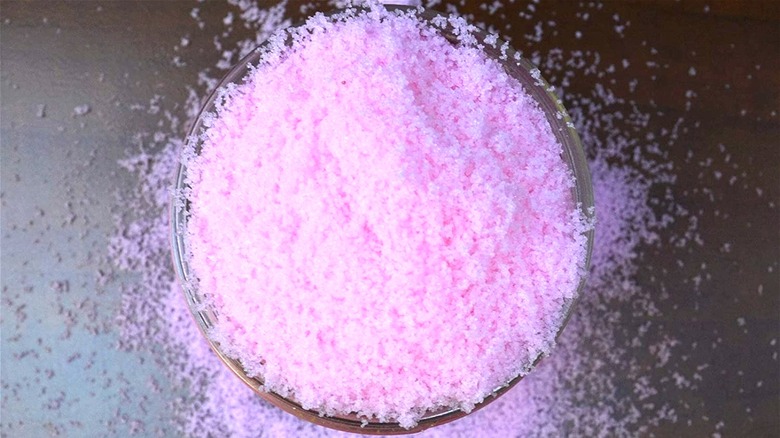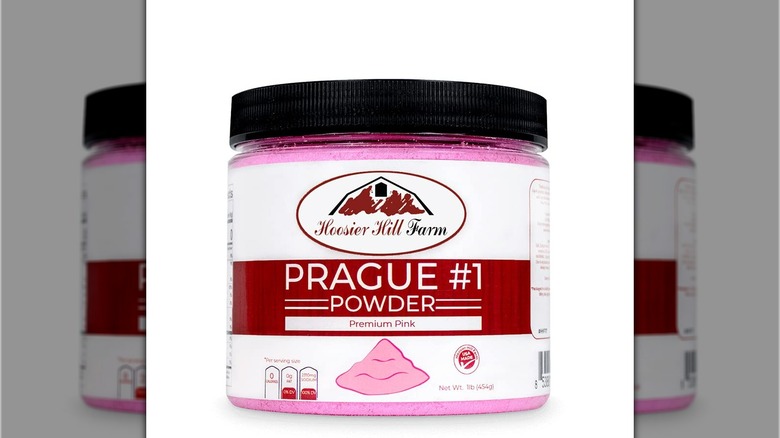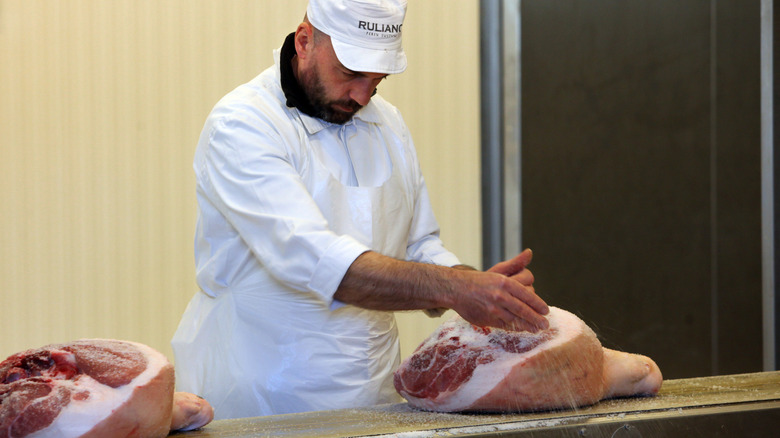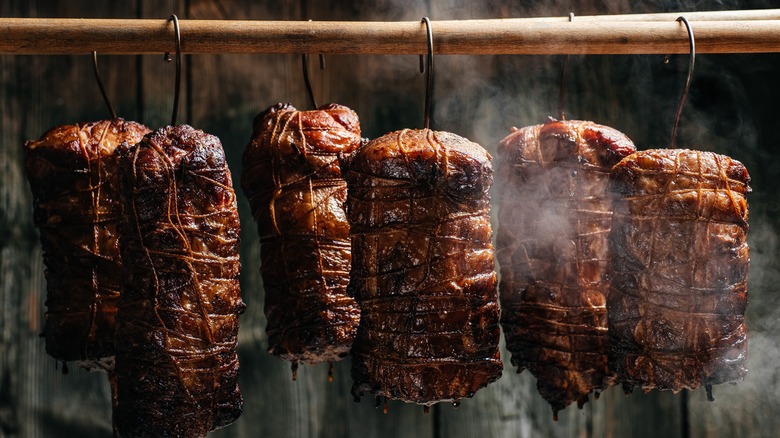What Is Prague Powder #1 And Why You Should Use It Sparingly
We may receive a commission on purchases made from links.
Long before there were iceboxes or refrigerators, people around the world relied on salt to preserve their meat and fish in order to sustain them through the lean times. Salt, however, isn't a fool-proof way to ensure food is preserved and safe to eat because it does not kill all of the microorganisms found in meat that can cause food to spoil and could result in botulism. Thus, curing salt such as Prague powder #1 was invented in order to keep the meat preserved safely.
Made of a combination of salt and sodium nitrate or salt and sodium nitrite, Prague powder #1 is one type of curing salt. There is also Prague powder #2; both are used to preserve meats, but the two have different makeups, with the primary difference being Prague powder #1 is used for quick cures like sausages and bacon, while #2 is used for slow cures for meats such as salami and prosciutto. Thanks to its pink coloring from food dye, Prague powder is also known as the Tinted Cure or Pink Curing Salt and is readily available for purchase.
A better way to cure meat
While salt may have been used as a meat preservative for centuries, Prague powder is much newer. It was invented in 1925 by Karl Max Seiffert, who requested a patent for the meat cure, as it was similar to a German product. Seiffert's creation was later sold to Griffith Laboratories in Chicago in 1934. What connection the powder had to the Czech Republic, or the city of Prague remains unknown.
Prague powder #1 is now sold at a variety of stores, including sporting goods stores because of its application for making jerky. Prague powder can also be bought online from companies specializing in spices to Amazon, although it may simply be called curing salt or one of the other names by which Prague powder is called. A range of sizes can be bought, from a 10-ounce pouch for the home smoker to a pound canister for a business or a real die-hard fan of smoking.
How curing salt works
Salt works to preserve food by removing the moisture from the meat — the molds, bacteria, and microorganisms found in the meat cannot then survive in these conditions. Salt can either be directly rubbed on the meat as a dry rub or mixed with water for a brine. However, even with plenty of salt rubbed on the meat, some bacteria will survive, posing health risks to those who plan to eat the meat.
That risk can be easily eliminated by using a curing salt, which is a combination of salt and sodium nitrites. Both sodium nitrites and sodium nitrates help to preserve the color of the meat, as well as stop bacteria from growing that would otherwise cause the meat to spoil. It also helps to enhance the flavor and texture of the meat being cured.
Prague powder #1 is comprised of 6.25% sodium nitrite and 93.75% salt, as well as some anti-caking elements and dye to give it a pink color so it is not mistaken for table salt. Using Prague powder like regular table salt can make a person very sick.
Also colored pink, Prague powder #2 has both sodium nitrate as well as sodium nitrite (6.25% sodium nitrite, 4% sodium nitrate, and 89.75% salt). Some of the more common cuts of meat to be preserved with Prague powder #1 are fish, jerky, bacon, and corned beef.
Too much can make you sick
Prague powder #1 is potent, and only a small amount needs to be used to cure meat. For a piece of meat weighing about 5 pounds, 1 teaspoon of curing salt is needed. Put another way, 4 ounces of Prague powder #1 will cure 100 pounds of meat. It's important to follow the manufacturer's instructions because going beyond the recommended amount can make a person very sick. And if you use too little, the desired preservation will not occur properly, posing other possible health risks.
Because of its ability to work quickly, meats cured with Prague powder #1 such as sausage can be cooked or smoked right away. For others that are being brined, the salt should be allowed to penetrate the meat for about 24 hours. When meat that has been treated with Prague powder #1 is smoked, the sodium nitrate becomes nitric oxide and omits a gas, allowing the sodium nitrate to dissipate. That amount that remains continues to dissipate as the food preservation process continues.
With the right amount of Prague powder #1 and some patience and skill, beautifully smoked meat can be yours to enjoy.



